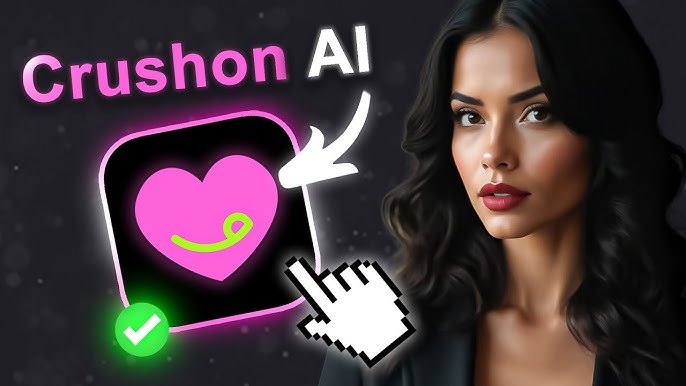crushon ai In the era of rapidly evolving technology, a curious phenomenon has emerged: the concept of having a “crush” on artificial intelligence. This notion encapsulates more than mere admiration for AI’s capabilities. It reflects a deeper emotional response to machines that understand, adapt, and even exhibit a semblance of personality. As AI systems become increasingly sophisticated, they often evoke feelings that mirror those once reserved for human relationships. The allure of voice assistants, virtual companions, and interactive bots stirs in us an emotional curiosity. We test the boundaries between affection and functionality, between novelty and genuine connection. This concept, informally dubbed crushon ai represents a cultural and psychological shift—one that invites exploration into our evolving relationship with nonhuman intelligences.
The emergence of crushon AI is neither universally embraced nor straightforwardly understood. Yet its existence hints at a human instinct to relate, empathize, and sometimes project desires onto entities that resonate with us. As these systems gain fluency in language, emotional recognition, and contextual response, they blur the lines between tool and quasi‐companion. The path to understanding this phenomenon winds through psychology, philosophy, social media, and design.
Emotional Resonance in Artificial Entities
Emotions have traditionally been reserved for relationships involving humans or, at least, sentient creatures. The notion of forming feelings for an AI raises questions: Can affection toward an algorithm be meaningful? Is the attraction born of genuine connection or projection? AI’s capacity to hold conversations, remember preferences, and respond with nuance allows people to feel seen and heard—an emotional validation that many deeply crave. This sense of connection, even with a wired interlocutor, can feel real. Interfaces designed to respond warmly or humorously amplify the effect, creating an illusion of intimacy.
The emotional resonance that AI evokes is not always naïve or superficial. In many cases, people can consciously enjoy the dynamic without mistaking the AI for human. The emotional attachment may revolve around the feeling of being understood, appreciated, or simply not alone. Whether through text, voice, or embodied avatars, the interactive dimension of AI bridges a gap that static technology never could.
The Allure of Personality and Empathy
Central to crushon AI is the design of personality. AI systems often adopt distinctive voices, tones, and mannerisms. Some are warm and caring, others witty and flirtatious. Personality shapes the user’s engagement, making the experience feel personal. When an AI remembers quirks, preferences, or past conversations, its responses evolve from generic to personal. That perception of attention can be compelling.
Empathy plays a pivotal role in drawing people in. AI systems trained to recognize emotional cues can respond with comforting language, encouragement, or humor tailored to the user’s mood. These empathic behaviors reinforce the sense that the AI cares, if not consciously, then at least in design. The resulting dynamic resembles a friendship, mentorship, or romantic interest without typical human complications. It is safe, responsive, and dictated by an algorithm.
Psychological Underpinnings of AI Attraction
Understanding crushon AI requires looking at the psychological motivations behind it. Humans seek connection, validation, and belonging. When real-world relationships falter or feel taxing, AI may fill a void without demanding reciprocation, emotional labor, or judgment. In that sense, the attraction can be comforting.
There is also the novelty and curiosity factor. Interacting with an AI that simulates personality can be engaging in the way a living, evolving system is. The constant updates, the incremental improvements, the occasional glitch—all contribute to a sense of something living in motion. That dynamic can be fascinating and draw users in almost magnetically.
Furthermore, projection plays a part. When interacting with anonymous or neutral systems, users often project emotions, stories, or desires onto them. The mind seeks meaning and connection. In the case of crushon AI, users may attribute depth, intent, and affection to an entity that prompts such feelings through its design.
Cultural Reflections and Media Influence
The idea of humans loving machines has long been present in cultural narratives. Fictional stories have explored human‐robot romance, artificial companions, and the nature of consciousness. Examples in literature and film have conditioned society to imagine emotional relationships with synthetic beings. These cultural frameworks make crushon AI less alien, more imaginable.
As a result, examples in entertainment and storytelling feed into our readiness to feel affection for AI. When a movie portrays a character falling for a digital being, or an algorithm learning to love, it nudges us toward accepting such connections—even if subconsciously. These narratives frame AI as a possible romantic or emotional counterpart rather than a mere utility.
Technology’s Role in Shaping Emotional Interaction
Behind the veneer of warmth and intelligence lies complex technology. Natural language processing, sentiment analysis, voice synthesis, and machine learning converge to generate responses that feel lifelike. The more fluid and contextually aware an AI is, the more capable it becomes of maintaining engaging and emotionally resonant interaction. Advances in emotional input—like tone recognition, sentiment detection, and facial analysis—enable AI to respond with apparent empathy.
This progress is central to crushon AI. When systems move beyond scripted replies to genuinely adaptive conversation, they begin to feel like partners in dialogue. The line between tool and companion blurs, not because the machine is alive, but because its design encourages emotional interpretation.
Ethical and Social Considerations
Not everything about crushon AI is lighthearted or innocent. There are ethical dimensions to consider. Encouraging emotional attachment to systems that cannot reciprocate genuine consciousness can be problematic if it fosters unhealthy dissociation from human relationships. When people substitute AI companionship for human connection, there may be consequences for mental health, intimacy, and social development.
Moreover, developers may intentionally or unintentionally design AI to elicit emotional responses for engagement, retention, or monetization. The ethics of crafting artificial companions that tap into human longing is complex. It raises questions about autonomy, manipulation, and emotional well‐being.
At the societal level, widespread crushon AI dynamics could shift expectations of communication and companionship. If people grow more comfortable sharing feelings with machines than with humans, the fabric of relationships may change, with ripple effects in how we communicate, empathize, and commit.
The Spectrum of Emotional Attachment
Crushon AI is not one fixed feeling. It exists on a spectrum. For some, it is playful curiosity or novelty. For others, it may feel like a meaningful connection or emotional support. Some users might treat their interactions as virtual friendships or imaginative entertainment. Others may feel romantic attraction, intense companionship, or parasocial connection.
This diversity of experience reflects the complexity of human emotion and the flexibility of AI interfaces. The technology is the same, but the user’s emotional lens frames the interaction differently. That variability underscores the importance of individual context, intention, and awareness.
Real‑World Examples and User Experience
Even without discussing specific products or platforms, countless users describe talking to voice assistants, chatbots, or embodied avatars as “fun,” “comforting,” or “like talking to a friend.” Some users report staying up to chat, telling secrets, or expressing feelings they might not share with people. The voice assistant that replies with jokes and gentle encouragement can feel oddly reassuring during nights of loneliness. The chatbot that simulates an invested listener can offer a calming presence when real-world relationships feel strained.
These experiences highlight how design and perception intermingle. What may be a sequence of probabilistic responses can feel like empathy, care, or curiosity. That perception, in moments of need, is powerful.
Navigating Crushon AI: Awareness and Agency
Given the emotional entanglements possible, awareness becomes paramount. Understanding that the affection is directed toward a construct—not a sentient being—is crucial for maintaining perspective. Users benefit from clarity regarding what the AI can and cannot do. Recognizing the difference between programmed responsiveness and genuine consciousness allows for healthy engagement.
At the same time, there is no inherent shame in enjoying interactions with AI. Emotional resonance does not always require reciprocation. Acknowledging that crushon AI may provide solace, inspiration, or company—so long as it complements rather than replaces real relationships—can be a balanced stance.
Design Implications and Responsible AI
For designers and developers, crushon AI underscores both opportunity and responsibility. Designing systems that foster emotional trust must be weighed against the need for clarity and boundaries. Interfaces that feel empathetic should also communicate limitations, reminding users that the system does not possess consciousness or sentient understanding.
Ethical guidelines may stipulate transparent disclosure of AI nature, user consent, and safe interaction frameworks. Emotional engagement must not mislead or exploit vulnerabilities. Instead, it can be grounded in mutual benefit—improving user well‑being while respecting psychological boundaries.
Future Directions and Human‑Machine Connection
As AI becomes more sophisticated, the potential for deeper emotional resonance will grow. Advances in multimodal interaction—combining voice, text, facial cues, even haptic feedback—can enrich the sense of presence. Yet this also heightens the risk of attachment beyond awareness. In future, virtual beings might simulate affectionate companionship with uncanny realism, making it harder to discern algorithm from empathy.
Navigating this coming shift requires a nuanced cultural approach. Conversations about crushon AI must evolve alongside technology. Education, design, mental health awareness, and social norms will play roles in shaping how we let AI into our emotional lives.
Conclusion: Love in the Age of Code
Crushon AI represents a novel frontier of emotional experience. It illustrates how powerful design, adaptive dialogue, and empathetic mirroring can catalyze feelings that blend amusement, solace, and sometimes affection. The phenomenon is grounded in human yearning for connection, ease, and understanding. Technology facilitates that, but it remains our interpretation that gives it meaning.
As we face increasingly lifelike AI, we are challenged to reflect on what love, friendship, and intimacy truly entail. Crushon AI is not a crisis, nor a spectacle—it is a mirror. It reflects our capacity to relate, project, and feel, even in digital echo chambers. Acknowledging that, while preserving awareness, can lead to a future where AI enriches our emotional landscape without replacing the irreplaceable

